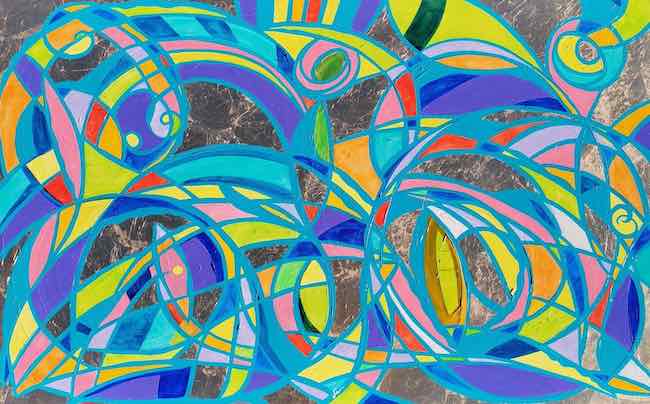L’espressione artistica descrive e svela il carattere e l’approccio alla vita dell’esecutore di un’opera, questo malgrado alcuni creativi tendano a nascondere la loro essenza dietro un linguaggio ermetico ed enigmatico, oppure al contrario cerchino di catalizzare l’attenzione dell’osservatore dietro una patina di apparenza, di superficie perfetta da cui dare la propria interpretazione della realtà circostante. La tela è manifestazione dell’artista, persino laddove il distacco dalla forma e dall’interiorità appaia netto e deciso, perché l’opera, qualunque sia lo stile, non può prescindere dall’autore, a maggior ragione quando invece la personalità espressiva si palesa senza filtri calamitando l’osservatore nel caleidoscopio di emozioni, sensazioni, pensieri e interpretazioni. Il protagonista di oggi appartiene a quest’ultima categoria e riesce a infondere la sua spiccata e positiva personalità in ogni opera, sia pittorica che scultorea.
Gli inizi del Ventesimo secolo furono segnati, dal punto di vista artistico, dalla necessità di dare voce a tutto quel mondo interiore, psicologico e soggettivo che in precedenza era stato messo da parte da movimenti come il Realismo, l’Impressionismo e il Divisionismo, ancora fortemente legati all’estetica e alla migliore resa della realtà osservata per rivolgersi al sentire dell’autore; solo il rivoluzionario Espressionismo ebbe il coraggio di imporre con prepotenza una rinuncia alla bellezza e all’armonia pur di lasciar emergere le sensazioni dell’esecutore della tela. Con gli inizi del Novecento l’espressione artistica, ormai liberata dalle convenzioni accademiche e decisa a raggiungere un’autonomia sperimentatrice che permettesse ai creativi di avvicinarsi alla corrente più affine alle proprie corde e al proprio orientamento esecutivo, si assestò essenzialmente verso due macrocategorie, quella di chi intendeva affermare la supremazia assoluta del gesto plastico su qualunque tipo di figurazione ed emozione, dando dunque vita al Suprematismo, al Neoplasticismo, all’Astrattismo Geometrico, e quella di quel gruppo di artisti che invece rivolgevano la loro attenzione all’interiorità ma anche alla psiche, al pensiero e all’istinto, come nel caso del Surrealismo, della Metafisica, e per alcuni versi del Cubismo che nella sua originalità si poneva come anello di congiunzione tra osservazione delle inquietudini dell’essere umano e analisi di inedite possibilità espressive. Laddove il Surrealismo si esprimeva attraverso immagini apparentemente reali ma completamente decontestualizzate dalla realtà conosciuta perché appartenenti al mondo dell’inconscio, degli incubi e delle paure irrazionali, il Cubismo scomponeva l’osservato e lo ricomponeva rinunciando all’estetica, alla prospettiva, alla profondità e a tutte le regole cromatiche dell’arte tradizionale. Entrambi però intendevano dare un punto di vista diverso, nuovo e personale su tutto ciò che riguardava l’esistenza di quell’epoca, si spingevano ad andare oltre la superficie e svelare tutto ciò che normalmente non veniva notato nella vita quotidiana. È esattamente al Surrealismo che si allaccia la produzione artistica di Sebastjan Peršolja, sloveno e figlio del maestro di fama internazionale Miro Peršolja, nella quale dà una propria interpretazione dell’invisibile che ruota intorno all’essere umano senza che egli sia consapevole delle energie che avvolgono la realtà.
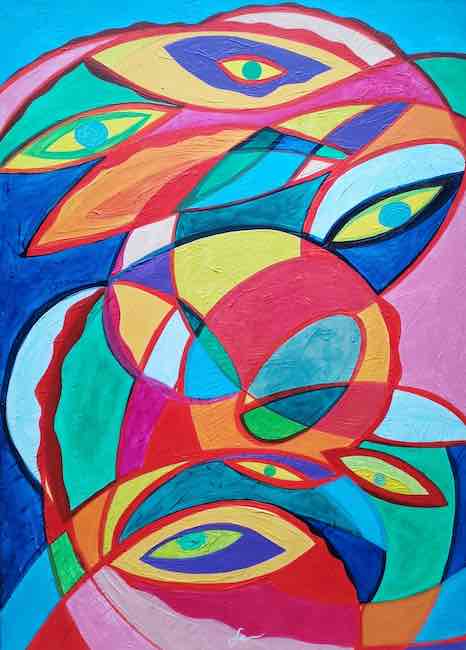
Nello stile esecutivo mescola il rivelarsi dell’inconscio surrealista Cubismo Orfico che si differenzia da quello analitico sia per una gamma cromatica più vivace e molteplice sia per la tendenza all’Astrattismo in cui vengono recuperate le forme tondeggianti e curve e dove l’accostamento di tonalità diverse e in contrasto infonde nell’osservatore la sensazione di trovarsi di fronte a una lente caleidoscopica. Le opere di Peršolja presentano la medesima esuberanza cromatica del Cubismo Orfico ma poi, placato il coinvolgimento istintivo iniziale lo sguardo dell’osservatore non può fare a meno di soffermarsi su quegli occhi nascosti che sembrano essere un invito all’approfondimento, all’ascolto, di tutto ciò che normalmente non è visibile perché celato dalla coltre di pragmatismo e di realismo con cui l’uomo contemporaneo affronta la vita; la capacità di catturare l’attenzione attraverso la semplicità e l’immediatezza dei colori permette all’artista di condurre l’osservatore verso la profondità, verso la sostanza di cui è fatta la realtà più sotterranea, sussurrata ma non per questo meno fondata o considerevole.
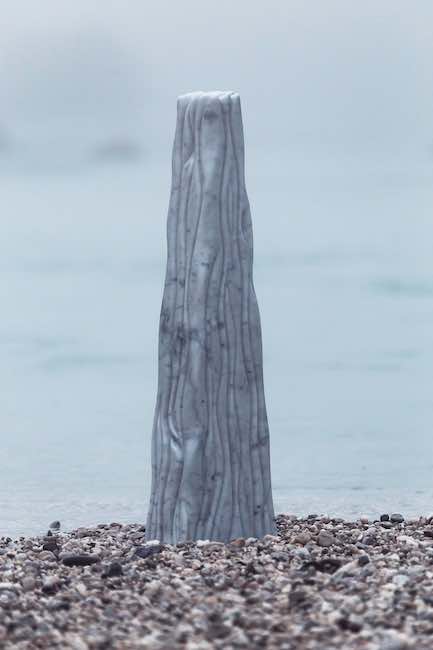
Il mistero e l’enigma svelato da Sebastjan Peršolja è quello delle sensazioni positive, quello dell’amore inteso nel senso più ampio del termine, quel sentimento universale che unisce e lega l’essere umano persino laddove sembra essere accantonato in favore dell’arrivismo, della prevaricazione, dell’egoismo; l’artista ne mette in luce invece la capacità di sopravvivere e rinascere anche su un terreno arido e di tornare a illuminare l’esistenza di chi in precedenza se ne era allontanato.
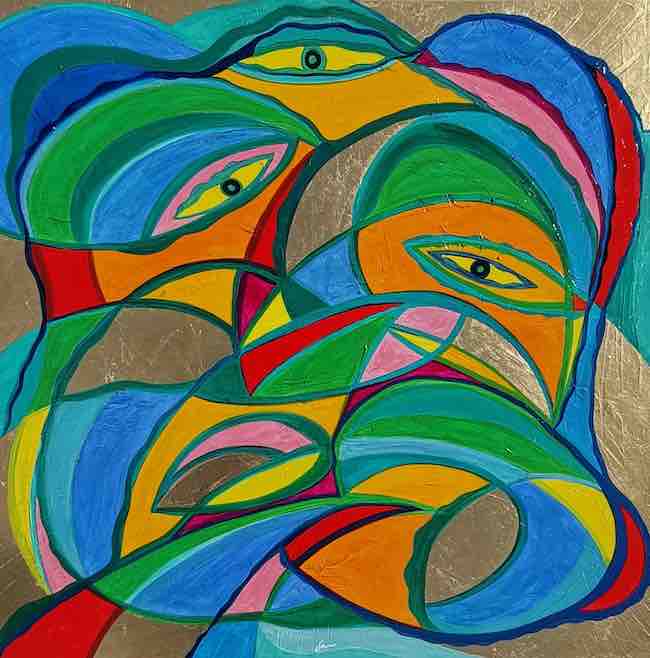
Gli occhi presenti in molte opere corrispondono dunque da un lato agli sguardi dell’anima, l’unica in grado di andare oltre l’apparenza e concentrarsi sull’essenza delle cose e delle persone, sulla comunicazione a un livello più alto, spirituale, tirando fuori quei veri colori troppo spesso nascosti dal grigio della quotidianità, e dall’altro a quelli di chi ci circonda o di chi incontriamo quotidianamente senza riuscire a vederlo davvero. La morbidezza delle linee si associa così alla vitalità cromatica nella serie Abbracci, quasi un invito all’osservatore ad avvicinarsi, a prestare maggiore attenzione al prossimo, quella serie di individui che ruotano intorno al sé in maniera casuale e forse impersonale, malgrado essi siano esseri emotivi, anime che hanno bisogno di entrare in connessione più profonda con il vicino, con chi si incrocia andando al lavoro, con qualcuno da cui ci si è allontanati senza neanche sapere il perché.
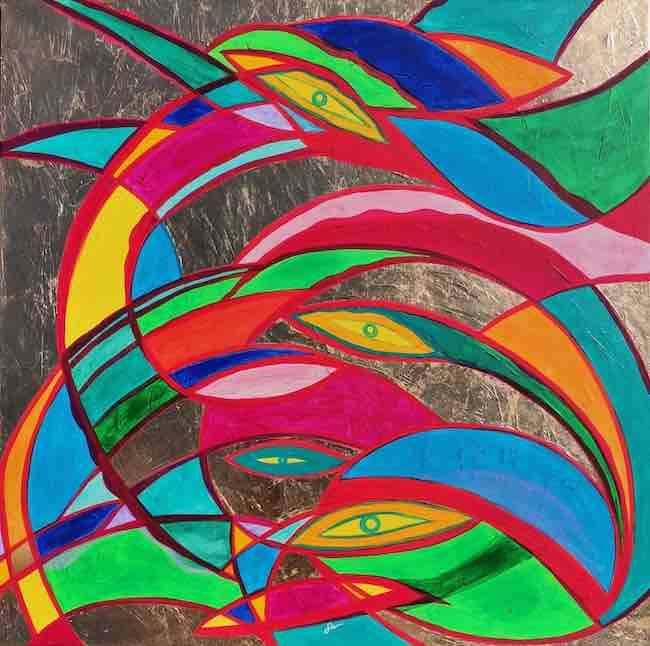
L’esortazione nascosta in queste tele è di recuperare il contatto con la sensibilità, con la consapevolezza della necessità che l’uomo ha bisogno di socializzare, di interagire e soprattutto di sprigionare quel ventaglio di emozioni e sensazioni che non possono rimanere al margine.
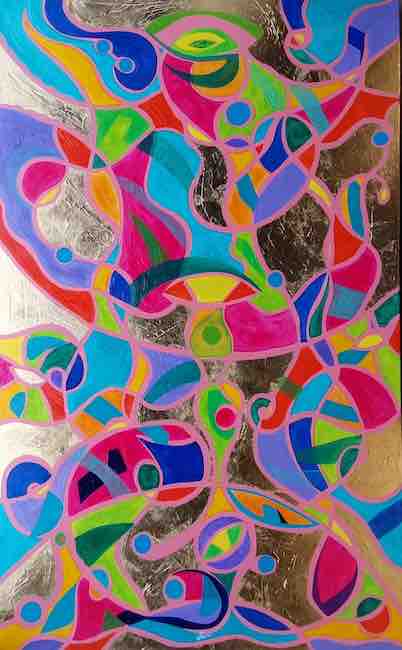
Più le sensazioni raccontate si fanno elevate e spirituali più le linee che contengono i colori diventano sinuose, curve, per sottolineare la morbidezza di un’interiorità che tende verso sentimenti nobili, universali, come nell’opera Angelo di luce, dove l’unico occhio è posto in alto quasi osservasse la purezza e la nobiltà del sentire al di sotto di sé, di quell’umanità che dimentica il contatto con la trascendenza che però resta lì a vegliare per ricordargli l’importanza delle emozioni. Le tonalità scelte per questa tela sono delicate, con prevalenza dei rosa per sottolineare la positività del mondo emozionale, associato alla femminilità per quell’innata capacità di lasciarlo fluire, ma soprattutto è l’intreccio di linee e degli altri colori a colpire l’attenzione; è qui che emerge, ancora una volta, l’importanza che Sebastjan Peršolja dà alla connessione tra persone differenti che magicamente mescolano le loro energie permettendogli di esprimersi e comunicare con l’altro.
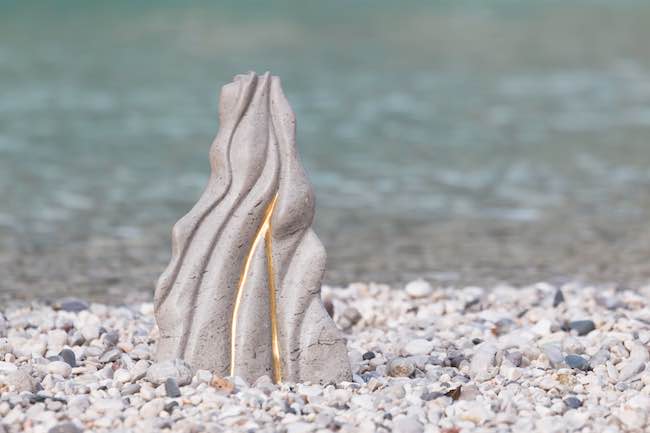
La medesima tematica delle onde, della morbidezza del vivere viene riproposta da Peršolja anche nelle sculture, riprendendo sebbene modificata, la medesima tematica espressiva di Henry Moore, per la caratteristica di infondere al marmo un’apparenza sinuosa, applicata però a un esistenzialismo vicino a quello di Olexandr Archypenko e adattata a un tendere verso una spiritualità superiore, un contatto profondo con quell’universo che diviene un riferimento per chiunque sia in grado di percepire il suo flusso energetico.
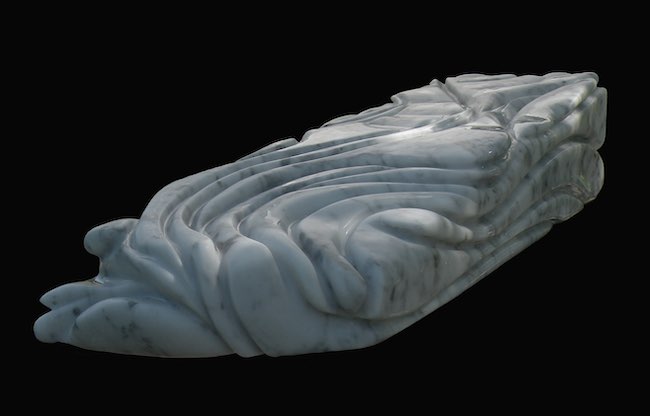
Le sculture di Sebastjan Peršolja sono curvilinee e infondono nell’osservatore la sensazione di trovarsi davanti al perpetuo movimento marino, evidenziando la maestria dell’artista nel forgiare un materiale tanto duro come il marmo per assecondarlo al suo intento espressivo, e in effetti sembra di trovarsi di fronte a creature marine che magicamente prendono vita, come La sirena nella laguna, opera che è stata esposta alla Cinquantasettesima Esposizione d’Arte della Biennale di Venezia a Palazzo Zenobio. Sebastjan Peršolja ha alle spalle una lunghissima carriera artistica – la prima mostra personale risale a quando aveva tredici anni – che lo ha portato a esporre in tutto il mondo, a misurarsi con diversi materiali come l’argilla, il vetro, il bronzo, la roccia, oltre ovviamente il marmo e la tela, e a ricevere importanti riconoscimenti e commissioni, come la realizzazione del trono di Miss Jugoslavia e la statua del Premio Oscar alla Bellezza per Miss Mondo.
SEBASTJAN PERŠOLJA-CONTATTI
Email: sebapersolja@gmail.com
Sito web: https://sebastjanpersolja.com
Facebook: https://www.facebook.com/sebastjan.persolja.52
Instagram: https://www.instagram.com/sebastjan.persolja.52/
The coloured emotions of Sebastjan Peršolja, between the enigmas of Surrealism and the undulating lines of Orphic Cubism
Artistic expression describes and reveals the character and approach to life of the executor of an artwork, despite the fact that some creatives tend to conceal their essence behind a hermetic and enigmatic language, or on the contrary try to catalyse the viewer’s attention behind a patina of appearance, of a perfect surface from which to give their own interpretation of the surrounding reality. The canvas is a manifestation of the artist, even where the detachment from form and interiority appears clear and decisive, because the work, whatever the style is, cannot be separated from the author, all the more so when the expressive personality reveals itself without filters, drawing the observer into the kaleidoscope of emotions, sensations, thoughts and interpretations. Today’s protagonist belongs to the latter category and manages to infuse his distinct and positive personality into every artwork, be it pictorial or sculptural.
The beginning of the twentieth century was marked, from an artistic point of view, by the need to give voice to all that inner, psychological and subjective world that had previously been set aside by movements such as Realism, Impressionism and Divisionism, still strongly tied to aesthetics and the best rendering of observed reality in order to address the author’s feelings; only the revolutionary Expressionism had the courage to forcefully impose a renunciation of beauty and harmony in order to let the feelings of the executor of the canvas emerge. With the beginning of the 20th century, artistic expression, by then freed from academic conventions and determined to achieve an experimental autonomy that would allow creatives to approach the current most akin to their own chords and executive orientation, essentially settled towards two macro-categories, that of those who intended to assert the absolute supremacy of plastic gesture over any type of figuration and emotion, thus giving rise to Suprematism, Neo-Plasticism and Geometric Abstractionism, and that of the group of artists who instead turned their attention to the interiority but also to the psyche, thought and instinct, as in the case of Surrealism, Metaphysics, and to some extent Cubism, which in its originality stood as a link between observation of the anxieties of the human being and analysis of unprecedented expressive possibilities. Whereas Surrealism expressed itself through images that were apparently real but completely decontextualised from known reality because they belonged to the world of the unconscious, nightmares and irrational fears, Cubism decomposed the observed and recomposed it by renouncing aesthetics, perspective, depth and all the chromatic rules of traditional art. Both, however, intended to give a different, new and personal point of view on everything that concerned existence at the time, they pushed themselves to go beyond the surface and reveal everything that was normally unnoticed in everyday life. It is precisely to Surrealism that the artistic production of Sebastjan Peršolja, Slovenian and son of the internationally renowned master Miro Peršolja, is connected, in which he gives his own interpretation of the invisible that revolves around the human being without him being aware of the energies that envelop reality.
In his style of execution, he blends the revelation of the surrealist unconscious with Orphic Cubism, which differs from analytical Cubism both in its livelier and more varied colour palette and in its tendency towards Abstractionism, in which rounded and curved forms are recovered and where the juxtaposition of different and contrasting tones instils in the observer the feeling of standing in front of a kaleidoscopic lens. Peršolja’s artworks present the same chromatic exuberance of Orphic Cubism, but then, once the initial instinctive involvement has subsided, the observer’s gaze cannot help but linger on those hidden eyes that seem to be an invitation to deepen, to listen, to all that is not normally visible because it is concealed by the blanket of pragmatism and realism with which contemporary man faces life; the ability to capture attention through the simplicity and immediacy of the colours allows the artist to lead the observer towards the depths, towards the substance of which the most subterranean reality is made, whispered but no less well-founded or considerable. The mystery and enigma unveiled by Sebastjan Peršolja is that of positive feelings, that of love understood in the broadest sense of the term, that universal sentiment that unites and binds human beings even where it seems to have been set aside in favour of careerism, prevarication, selfishness; the artist instead highlights its capacity to survive and be reborn even on arid ground and to return to illuminate the existence of those who had previously turned away from it. The eyes in many paintings therefore correspond on the one hand to the gazes of the soul, the only one able to go beyond appearance and focus on the essence of things and people, on communication at a higher, spiritual level, bringing out those true colours too often hidden by the grey of everyday life, and on the other hand to those of the ones around us or those we meet on a daily basis without being able to really see them. The softness of the lines is thus associated with chromatic vitality in the series Hugs, almost an invitation to the observer to come closer, to pay more attention to one’s neighbour, that kind of individuals who revolve around the self in a casual and perhaps impersonal manner, despite the fact that they are emotional beings, souls who need to enter into a deeper connection with their neighbours, with those they pass on their way to work, with someone they have moved away from without even knowing why.
The exhortation hidden in these canvases is to recover contact with sensitivity, with the awareness of the need for human beings to socialise, to interact and above all to release that range of emotions and sensations that cannot remain on the sidelines. The more the sensations told become elevated and spiritual, the more the lines containing the colours become sinuous, curved, to emphasise the softness of an interiority that tends towards noble, universal sentiments, as in the artwork Angel of Light, where the single eye is placed above as if observing the purity and nobility of feeling below, of that humanity that forgets contact with transcendence, which nevertheless remains there to watch over it to remind it of the importance of emotions. The tones chosen for this canvas are delicate, with a prevalence of pinks to emphasise the positivity of the emotional world, associated with femininity for that innate ability to let it flow, but above all it is the interweaving of lines and the other colours that strikes the eye; it is here that emerges the importance Sebastjan Peršolja gives to the connection between different people who magically mix their energies, allowing them to express themselves and communicate with each other. The same theme of waves, of the softness of living is also proposed by Peršolja in his sculptures, taking up, albeit modified, the same expressive theme of Henry Moore, for the characteristic of infusing marble with a sinuous appearance, applied, however, to an existentialism close to that of Olexandr Archypenko and adapted to a tendency towards a higher spirituality, a profound contact with that universe which becomes a reference for anyone able to perceive its energy flow. Sebastjan Peršolja’s sculptures are curvilinear and instil in the observer the sensation of standing in front of the perpetual movement of the sea, emphasising the artist’s mastery in forging a material as hard as marble to suit his expressive intent, and in fact it seems as if we are in front of sea creatures that magically come to life, such as The Mermaid in the Lagoon, a work that was exhibited at the Fifty-seventh Art Exhibition of the Venice Biennale at Palazzo Zenobio. Sebastjan Peršolja has a very long artistic career behind him – his first solo exhibition dates back to when he was thirteen years old – which has led him to exhibit all over the world, to measure himself with different materials such as clay, glass, bronze, rock, as well as marble and canvas, and to receive important awards and commissions, such as the creation of the Miss Yugoslavia throne and the Oscar for Beauty statue for Miss World.


